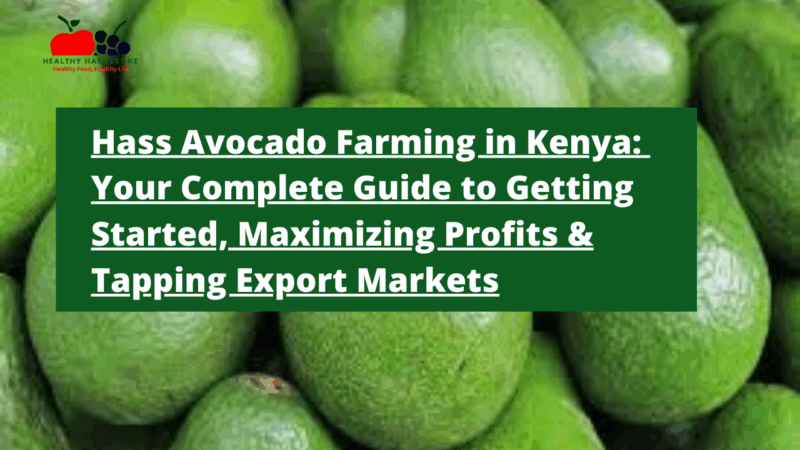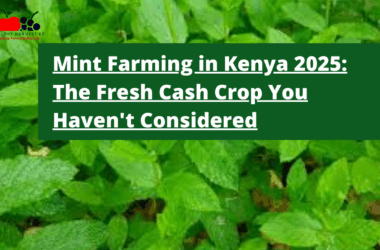Ever thought about jumping into Kenya’s green gold rush? Hass avocado farming isn’t just another agricultural venture—it’s Kenya’s ticket to the global superfood market, with profits that can hit 600,000 Kenyan shillings per acre once your trees mature.
I’m breaking down everything you need to know about starting your own Hass avocado farm in Kenya, from picking the perfect spot to getting your fruit onto international shelves. Ready to turn green fruit into greenbacks? Let’s dig in.
Why Hass Avocado Farming in Kenya Makes Sense Right Now
Kenya’s not playing around when it comes to avocados. We’ve claimed the top spot as Africa’s leading avocado producer and carved out a serious name in the global export game.
Since their introduction by Portuguese traders back in the 18th century, avocados have come a long way in Kenya. The country’s first commercial orchard was planted in 1923 near Mt. Elgon by the Anderson family—who, by the way, are still in the game with about 200 acres of avocado trees.
The numbers don’t lie:
- Avocado farming expanded from 13,305 hectares in 2015 to around 20,000 hectares by 2017
- By 2020, Kenya exported over 58 million kilograms of avocados worth about 8 billion Kenyan shillings
- Avocados now make up 17% of Kenya’s horticultural exports
What’s driving this boom? The Hass variety has become the star of the show thanks to its creamy texture, nutty flavor, and—crucially for exporters—superior shelf life compared to other varieties.
Where to Plant Your Avocado Empire in Kenya
Not all Kenyan soil is created equal when it comes to growing these green gems. Hass avocados have their favorite spots, primarily:
- Central Kenya: Murang’a, Kiambu, and Nyeri counties
- Rift Valley: Nakuru and Bomet counties
- Eastern Kenya: Embu and Meru counties
These regions hit the sweet spot for Hass avocados: altitudes between 1,000-2,000 meters above sea level with consistent rainfall throughout the year.
Your ideal farm location needs:
- Deep, fertile, well-drained soils
- Slightly acidic to neutral pH
- Protection from frost and extreme heat
- Moderate climate (Kenya’s highlands are perfect for this)
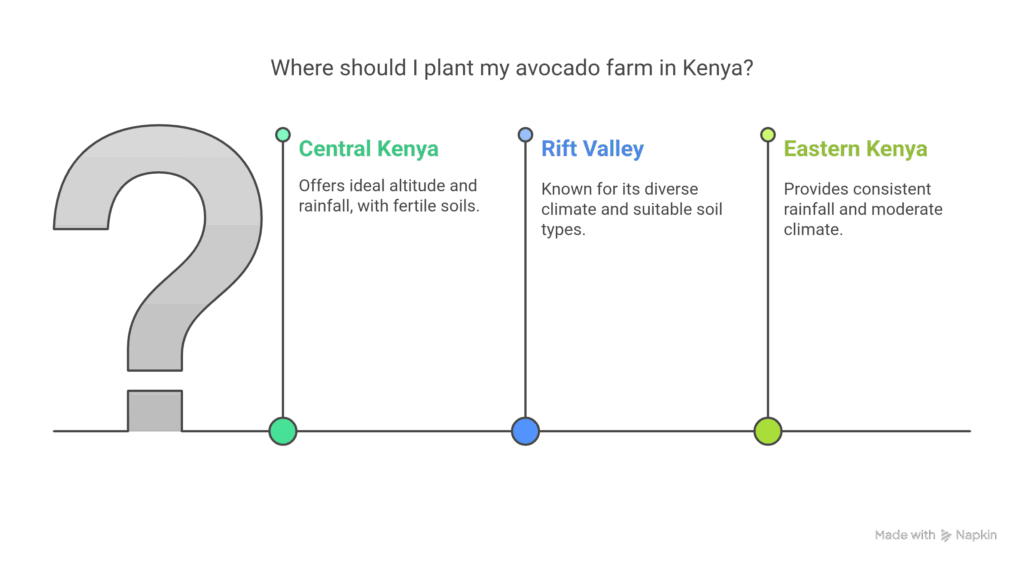
Getting Started: Setting Up Your Hass Avocado Farm
Land Preparation That Sets You Up for Success
First things first—prep your land right and you’ll thank yourself later. Here’s what you need to do:
- Clear all weeds and brush
- Deep plow to improve drainage
- Dig planting holes approximately 60cm deep and 60cm wide
- Space these holes 6-8 meters apart (this gives mature trees enough room and ensures good sunlight penetration)
Choosing Quality Planting Material
Your trees are only as good as the seedlings you start with. Don’t cut corners here:
- Buy certified seedlings from reputable nurseries
- Choose grafted seedlings for better yields and disease resistance
- Plant at the start of the rainy season to give your seedlings the best shot
- Make sure the graft union stays above soil level when planting (this helps prevent disease)
Early Care: Babysitting Your Baby Trees
The first few years are crucial. Your young trees need:
- Regular watering, especially during dry spells
- Mulching around the base to keep moisture in and weeds out
- Strategic pruning to develop a good branching structure that’ll make harvesting easier down the line
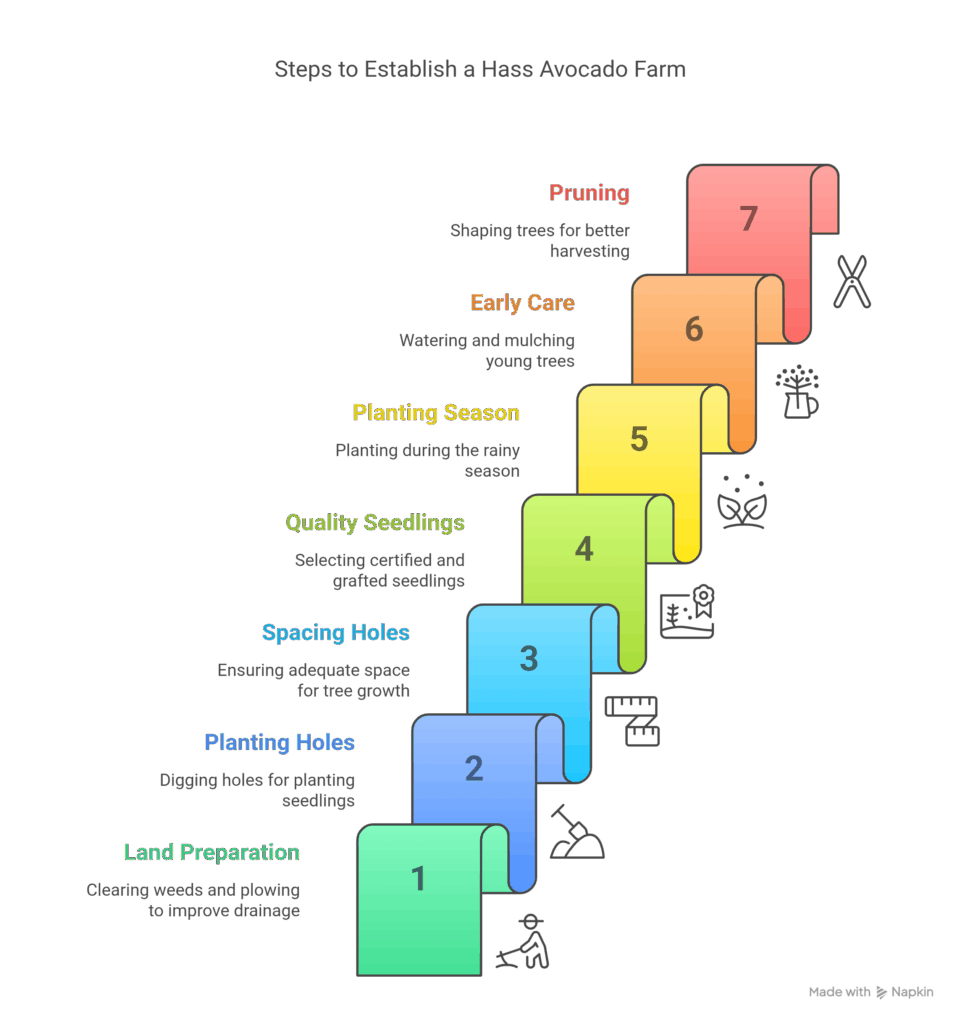
The Investment Breakdown: What You’ll Need to Spend
Let’s talk cash. Starting a Hass avocado farm requires some serious upfront investment before you see returns:
| Expense Item | Cost (Kenyan Shillings) per Acre |
|---|---|
| Land preparation | 5,000 |
| Planting 370 trees (8m x 8m spacing) | 14,000 |
| Irrigation system installation | 60,000 |
| Annual maintenance (Year 1) | 70,000 |
| Annual maintenance (Year 2) | 70,000 |
| Annual maintenance (Year 3) | 70,000 |
| Total pre-harvest investment | 349,000 |
That’s a significant chunk of change, and here’s the kicker—you’ll need to wait. Grafted Hass avocado trees typically start bearing fruit after 3-4 years, with peak production hitting around year six.
But patience pays off. Well-managed orchards can earn you over 600,000 Kenyan shillings per acre annually once they mature. Recent market performance has been especially strong, with prices reaching approximately 170 Kenyan shillings per kilogram during 2022-2024.
Keeping Your Trees Healthy: Managing Pests and Diseases
Nothing kills profits faster than pest problems. Here are the main culprits to watch for:
Fruit Flies
These pests leave small puncture marks on fruit surfaces, with larvae feeding inside and causing decay.
How to control them:
- Set up pheromone traps
- Use bait sprays with protein and insecticide
- Practice good orchard sanitation—remove fallen fruit immediately
Thrips
These tiny insects cause scarring on fruit surfaces and distorted leaves with a silvery appearance.
How to manage them:
- Use blue sticky traps to monitor populations
- Apply insecticidal soaps or neem oil
- Introduce beneficial predators like lacewings
False Codling Moth
Look for small entry holes on fruit surfaces and internal decay.
Management strategies:
- Set up pheromone traps
- Time insecticide applications during egg-laying periods
- Use mating disruption techniques
Scale Insects
These immobile pests cause yellowing leaves and branch dieback.
Control methods:
- Prune heavily infested branches
- Apply horticultural oils
- Introduce natural predators like ladybirds
For best results, combine biological, cultural, and chemical control methods in an integrated pest management approach. This gives you the most sustainable and effective protection.
Nutrition and Water Management: Feeding Your Green Investment
Fertilization That Maximizes Yields
Your trees need proper nutrition to produce those premium fruits:
- Mix organic manure into the planting hole when establishing trees
- Start applying balanced NPK fertilizer a few months after planting
- Adjust your fertilization program based on soil tests and visual tree health assessments
Smart Irrigation Strategies
While mature avocado trees can handle some drought, consistent irrigation during flowering and fruit development is non-negotiable if you want top yields.
A simple irrigation system costs around 60,000 Kenyan shillings—not cheap, but absolutely essential for commercial production. Consider it part of your non-optional startup costs.
Export Opportunities: Getting Your Avocados to Global Markets
Current Market Landscape
Europe remains the primary destination for Kenyan Hass avocados, with the Netherlands, France, and Germany leading the pack. But don’t sleep on emerging opportunities in the Middle East and Asia—these markets offer promising diversification prospects.
As of 2020, Kenya had exported avocados to various markets including:
- Egypt
- Saudi Arabia
- Russia
- Hong Kong
- Qatar
- Morocco
- South Africa
- European Union countries
Value Addition: Beyond Fresh Exports
While fresh exports dominate the industry, processing avocados into oil, puree, and other products represents a major opportunity. These value-added products can:
- Create additional revenue streams
- Provide markets for fruits that don’t meet export appearance standards
- Command premium prices (as noted by the Avocado Society of Kenya)
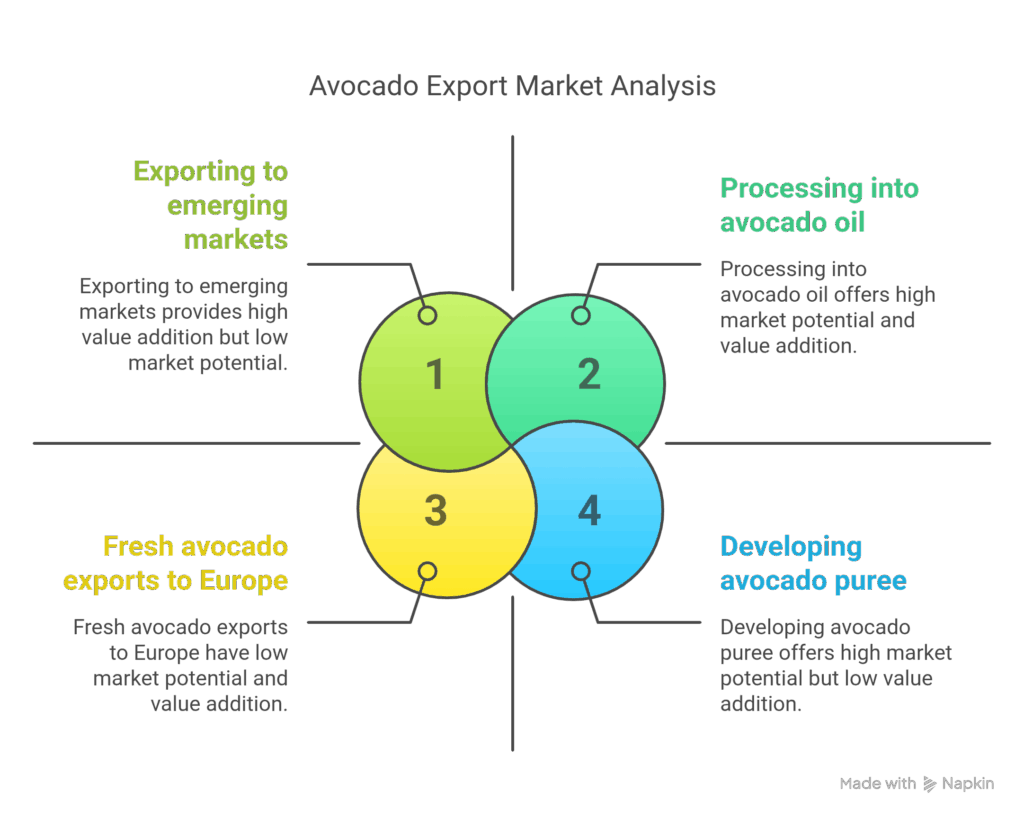
Industry Support: Organizations Behind Kenya’s Avocado Success
The Avocado Society of Kenya (ASOK) functions as the main hub for growers, exporters, and other industry players. They work on:
- Training farmers
- Facilitating market access
- Advocating for helpful industry policies
Recently, ASOK has focused on raising awareness about quality parameters and dry matter content to ensure Kenyan avocados meet international standards. They’ve also proposed regulations requiring movement permits for transporting avocados—a response to increasing theft cases that have hit farmers hard.
Challenges You’ll Face (And How to Overcome Them)
No farming venture comes without hurdles. Here’s what to watch for:
The Waiting Game
That 3-4 year period before initial harvests puts financial pressure on farmers with limited capital. Solution? Consider intercropping with fast-yielding crops during the establishment phase to generate interim income.
Security Issues
Rising avocado theft has become a serious concern as crop values increase. Stay involved with industry associations pushing for movement permits and other security measures.
Quality Control
Meeting increasingly strict international standards requires education and technical support. Join farmer cooperatives that provide training on proper harvesting techniques and quality management.
Climate Curveballs
While Kenya’s climate generally favors avocado production, changing rainfall patterns pose growing risks. Invest in water harvesting and efficient irrigation to mitigate these challenges.
Future Outlook: Where Kenya’s Avocado Industry Is Headed
Despite these challenges, the future looks bright green for Hass avocado farming in Kenya. Global demand continues to grow as more consumers recognize avocados’ nutritional benefits.
Strategic priorities for the industry include:
- Strengthening farmer cooperatives to boost marketing power
- Expanding value-addition processing
- Adopting tech-enhanced farming practices
- Diversifying export markets beyond Europe
Ready to Start Your Avocado Journey?
Hass avocado farming in Kenya offers a compelling opportunity for those willing to make the initial investment and practice patience. With potential annual returns exceeding 600,000 Kenyan shillings per acre, the wait can definitely be worth it.
Success hinges on:
- Careful variety selection
- Proper planting and cultivation techniques
- Effective pest management
- Strategic market engagement
With strong organizational support, evolving regulatory protection against theft, and expanding international market opportunities, Kenya’s avocado sector is positioned for continued growth. As the country continues developing its avocado value chain, opportunities for processing and product diversification will likely complement fresh exports, further strengthening the industry’s economic impact.
Ready to plant your first Hass avocado tree? The green gold rush is on—and there’s still plenty of room for newcomers with the right approach.
Have questions about starting your own Hass avocado farm in Kenya? Drop them in the comments below and I’ll help point you in the right direction.




